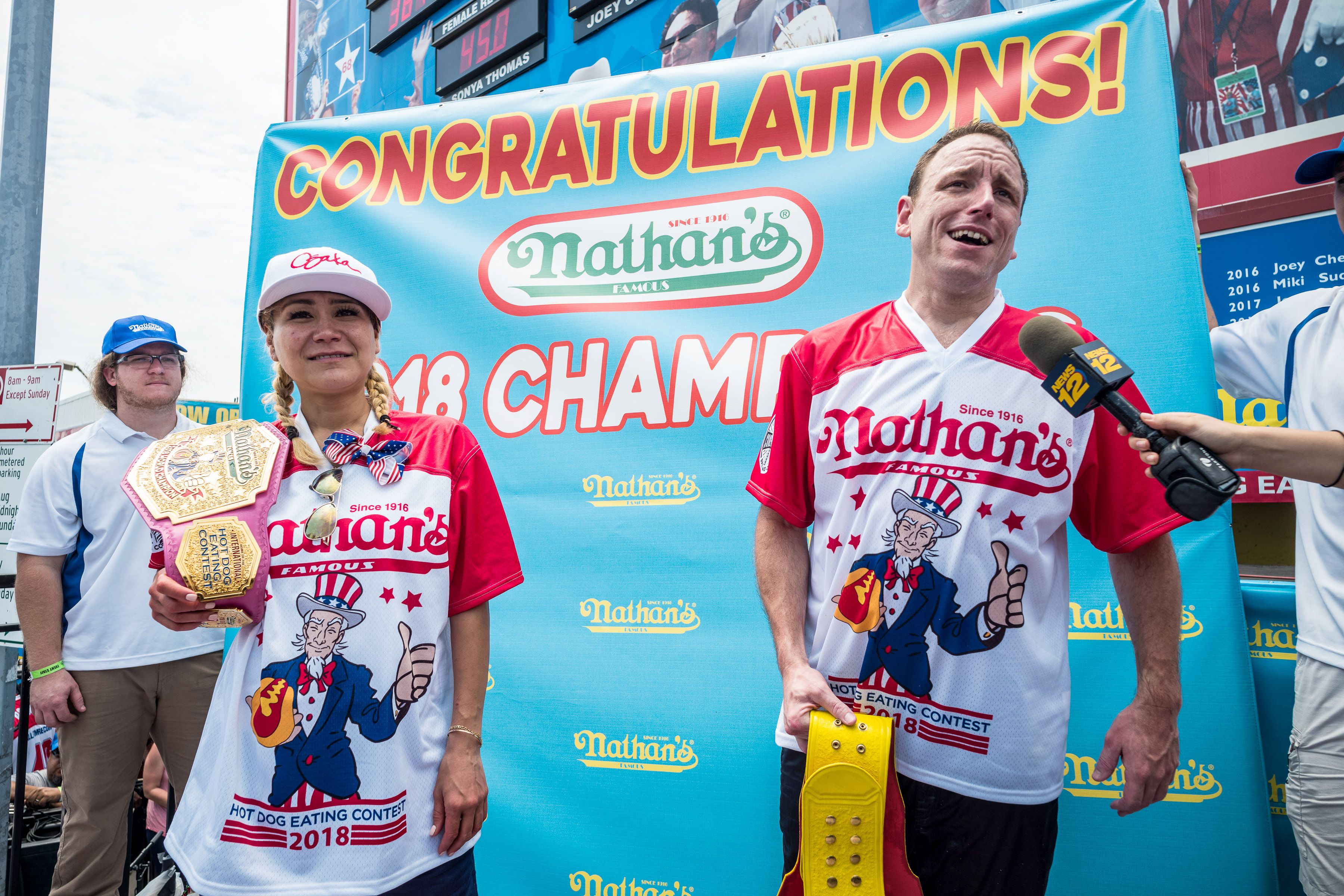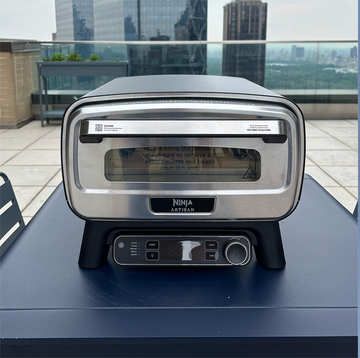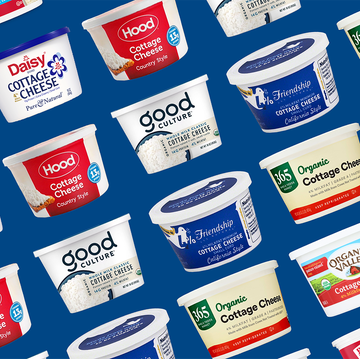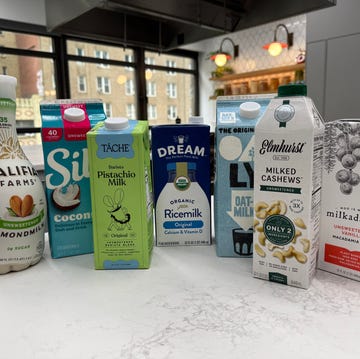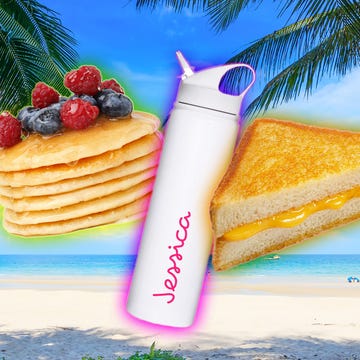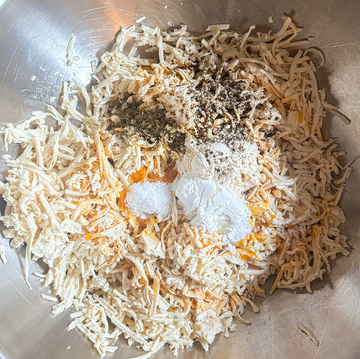Any training regimen for the Nathan’s Hot Dog Eating Contest is likely to have two aims: capacity and speed. "You need to have space to put the hot dogs and buns. Drinking as much water as humanly possible in a short amount of time [will] stretch your stomach," says Sarah Reinecke, who placed fourth at the last Coney Island competition. "The second thing is learning how to quickly down hot dogs. You do practice runs throughout the year, and then more frequently as it gets closer to the contest."
Despite all the hoopla that surrounds the Nathan’s Hot Dog Eating Contest, you might easily miss Reinecke. Why? Because she's female, and the women's arm of the contest is treated, oh, just a little bit differently than the men’s.
The ladies' competition only began this decade, and it's held in the morning, like an opening act. It airs on ESPN3—and it's pre-taped, at that—while the men's competition airs live, with five additional reruns throughout the day. Men are awarded the official Mustard Belt, while women get a pink one. When the women's contest launched in 2011, the winner was offered four times less money than the men got for winning their heat. Now, only after a public outcry, does each gender's winner rake in $10,000.
How did we get here? Most competitive eating events don't even separate men and women. After all, cramming processed meat down your gullet doesn't favor one sex over the other. To understand, you need to take a step back to see how the Nathan’s Hot Dog Eating Contest got so ginormous in the first place.
The first recorded hot dog eating contest held at Nathan's, on the Coney Island boardwalk in Brooklyn, NY, was in 1972. (Any accounts of the contest dating back to 1916 are considered to be myth.) The number of hot dogs eaten by those early winners is laughable compared to the stats reigning champion Joey Chestnut flaunts today: Guys would routinely win by eating around ten hot dogs in ten minutes. Really, any drunk hungry college kid could do that.
Unless you lived in New York City in those decades, you likely wouldn't have known about the contest, which would get coverage only in local papers. Two people are responsible for turning the display of gluttonous Americana into the junk food juggernaut it is today: Richard and George Shea. The Shea brothers' public relations firm took on representation of Nathan's Hot Dog Eating Contest and blitzed the world with pork publicity. They created qualifiers around the country and invited non-American competitors to the Brooklyn event—which George soon began announcing himself—to garner international press. In the midst of it all, they formed Major League Eating, a professional league for competitive eaters.
The summer of 2001 changed everything, though. First, Mayor Rudy Giuliani participated in the stunt of presiding over an athlete weigh-in at City Hall, then the buzz built around a Japanese competitor, Takeru Kobayashi. "I heard he can eat 30. I was like, 30? That's never going to happen," Richard remembers. The record at the time was 25. "But he ate 50. That was massive. It was fascinating that this lean guy could could crush all the big Americans."
The sport took off as more and more athletes signed up to beat the unbeatable Kobayashi. Throughout his reign in the '00s, women competed alongside the men—and they did quite well. Sonya Thomas earned the nickname "The Black Widow" for how she'd eat men up (or at least, out-eat men). But with more awareness of the sport, more men signed up—and along the way, it became hard for the women to even approach the exponential new numbers that Kobayashi or his rival Chestnut were reaching.
In 2011, the women's division was created. In celebration, a tea party at the Plaza Hotel was hosted for the female competitors the night before.
Laura Leu, who competed that year and attended the tea party, LOLs at the memory. "I think it was like four or five of us. They got us some tea and all the little snacks—tea sandwiches, cookies—and we just talked," she says. "The Sheas are master PR men. Everything they do is for press."
Richard Shea maintains that the reasons for splitting the competition were legit: More events meant more PR attention for everyone involved. "We determined that [women] deserved their own contest and their own $20,000 prize," Richard says. (That $20,000 purse is split among the top five winners: $10,000 for first place; $5,000 for second place, $2,500 for third place, $1,500 for fourth place, and $1,000 for fifth place. And, "the truth was, the margin between the top female and the top male was pretty significant."
Richard sounds dejected that he and his brothers attempts to help women get more money and publicity might be viewed otherwise, noting other legitimate competitions (like the Olympics) that separate the genders. "I don't know that the thinking's parochial. It was more embracive," he says.
Some of the female competitors get that and feel they wouldn't be able to compete if the sexes competed together. "I probably wouldn't qualify," says Kate Prettyman, who came in ninth last year. "Most of [the men] can eat at least 20 [hot dogs], and I'm just not at that level yet." Still, she feels the gentle scratch of sexism during contests.
"At my qualifier this year, I realized how differently I was treated, because the MC actually started talking to me during the contest. Little things like that," she says. "Like, I don't think they would do that to Joey Chestnut. I'm shoving food in my mouth as quickly as I can! Now's not a good time to talk."
Others are angrier about it. "The women are treated like second-class citizens. And it sucks, to put it mildly," says Reinecke, who also calls the pink belt "contrived." "It just shuts off the visibility, right? It's like the women are the amateur division, and nobody really cares about them."
Some of Reinecke's ire is aimed at ESPN. "It makes me really frustrated because I know that there are women out there that can do it, and I want them to show up," she says. "But if you don't give us a chance to be seen, how are people even going to know about it?" (When reached, ESPN had no comment on their choice to air the contests differently.)
Another eater, Larell Marie Mele, has competed at Nathan's for nearly a decade and is resigned to men being the main event. "I understand that they have to give what the viewers want to see. That's where the interest is, so that's what's shown," she says. "I would love to be on television. At least we're streaming online!" (Editor's note: The women's competition does, in fact, air on television.)
While on the phone with Delish, Mele was eating a half gallon of ice cream. "Some people are athletes, some are not. The males in my family cannot possibly eat what I do," she says, though she encourages everyone—women and men—to give the sport a try.
"If you're afraid of getting messy, don't even bother. But if you don't care and you're ready to dig in, then go for it," she says, her giddiness reverberating. "It's such a wonderful experience. I am so happy I've done this. This week is my most favorite of the entire year."
You can tune in to the women's competition on EPSN3 or the ESPN App at 10:45 a.m. ET on July 4, 2019. The men's competition airs on ESPN2 at noon ET. It re-airs on the same channel at 3 p.m., 4p.m., and 1 a.m. ET, as well as 7 p.m. and midnight ET on ESPNews.
